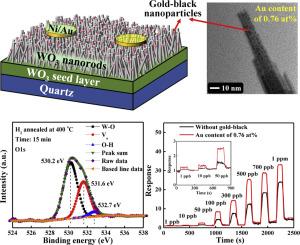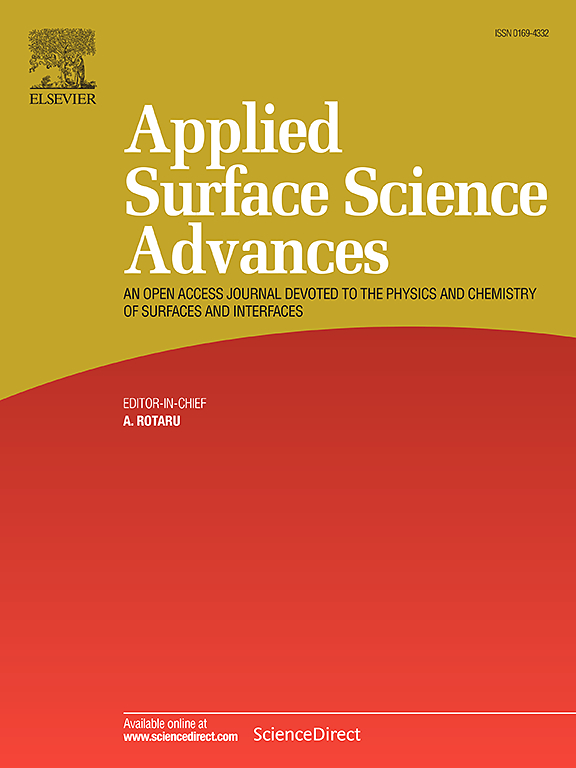Investigation performance of NO gas sensors using WO3 nanorod sensing membranes
IF 8.7
Q1 CHEMISTRY, PHYSICAL
引用次数: 0
Abstract
Tungsten oxide (WO3) nanorods were grown on WO3 seed layers using hydrothermal synthesis method as the sensing membranes of nitrogen oxide (NO) gas sensors. To obtain optimal crystalline structure, various sputtering parameters were controlled to deposit 100-nm-thick WO3 seed layers and then annealed in an oxygen ambience for 1 h at various temperatures. The WO3 nanorods were grown on the optimal WO3 seed layers using the hydrothermal synthesis method with various precursor solutions at various temperatures. To obtain the optimal amount of gas adsorption sites provided by the oxygen vacancies on the surface of the WO3 nanorods, the grown WO3 nanorods were annealed in a hydrogen atmosphere at various temperatures and for various times. To form p-n heterojunction and catalytic spillover effect, p-type gold-black nanoparticles were deposited on the n-type WO3 nanorods at approximately 80 K using a vapor cooling condensation system. The gold-black nanoparticles and the associated Au contents were observed and estimated using a high resolution transmission electron microscopy and energy dispersive spectroscopy, respectively. Under the 1-ppm NO concentration and operating temperature of 127.5 °C, the response of 33.25, response time of 52 s, and recovery time of 94 s were obtained. The activation energy of the NO gas sensors was lowered by generating oxygen vacancy and decorating gold-black nanoparticles onto the WO3 nanorods. Therefore, in addition to improving the response characteristics, both the response time and recovery time were also shortened due to the enhanced adsorption capability and desorption capability of NO molecules.

WO3纳米棒传感膜对NO气体传感器性能的研究
采用水热合成法在WO3种子层上生长氧化钨(WO3)纳米棒,作为氧化钨(NO)气体传感器的传感膜。为了获得最佳的晶体结构,控制各种溅射参数,沉积100 nm厚的WO3种子层,然后在不同温度下在氧气环境中退火1 h。采用水热合成法,采用不同的前驱体溶液和不同的温度,在最佳的WO3种子层上生长了WO3纳米棒。为了获得WO3纳米棒表面氧空位提供的最佳气体吸附位点,在氢气气氛中对生长的WO3纳米棒进行了不同温度和不同时间的退火。为了形成p-n异质结和催化溢出效应,采用蒸汽冷却冷凝系统在约80 K的温度下将p型金黑纳米颗粒沉积在n型WO3纳米棒上。利用高分辨率透射电子显微镜和能量色散光谱分别观察和估计了金-黑纳米颗粒和相关的Au含量。在NO浓度为1 ppm、工作温度为127.5℃的条件下,响应值为33.25,响应时间为52 s,恢复时间为94 s。通过生成氧空位和在WO3纳米棒上修饰金黑色纳米颗粒,降低了NO气体传感器的活化能。因此,在改善响应特性的同时,由于增强了NO分子的吸附和解吸能力,响应时间和恢复时间也缩短了。
本文章由计算机程序翻译,如有差异,请以英文原文为准。
求助全文
约1分钟内获得全文
求助全文

 求助内容:
求助内容: 应助结果提醒方式:
应助结果提醒方式:


